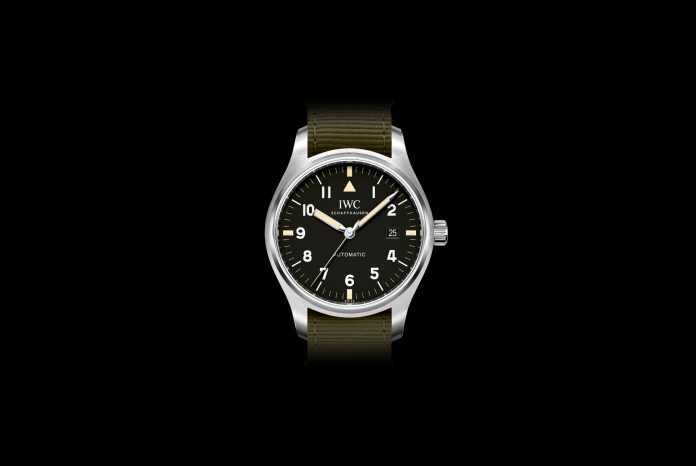The IWC Pilot’s Mark XVIII was created in 2016 as a chronograph which evolved from IWC’s iconic Mark 11, a megastar. It becomes easier to understand Mark XVIII, by knowing the Mark 11. The supply of this modest timepiece began in 1948 to the British Ministry of Defence. The watch was created to be a highly accurate, anti-magnetic instrument designed for astro-navigation. It was used by the Royal Air Force navigators.
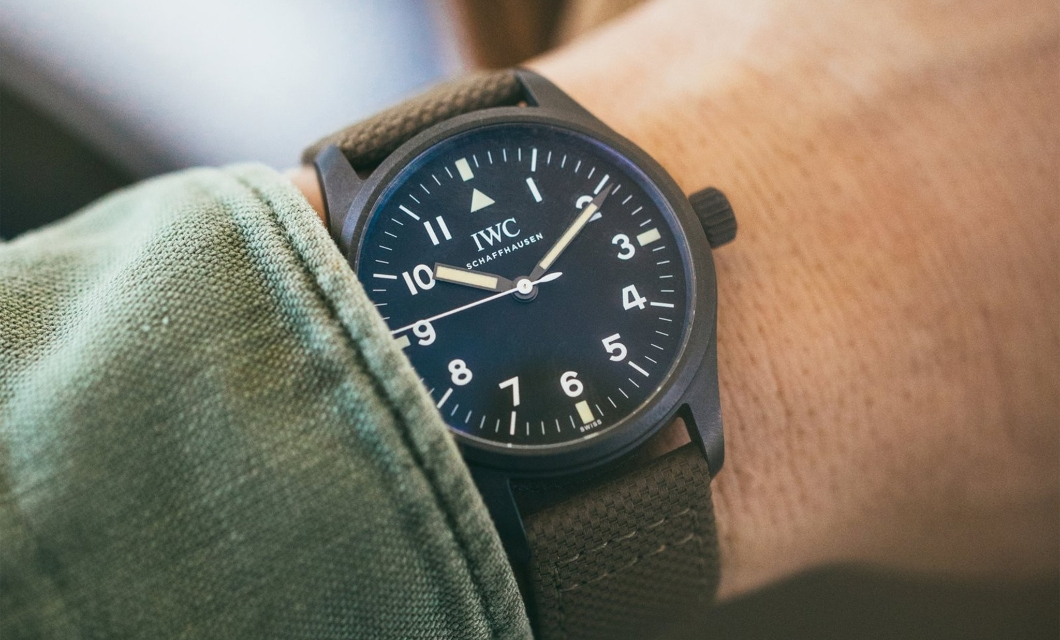
IWC’s Pilot’s watch mark XVIII, Hodinkee
The Mark 11 soon found popularity at a time when pilot watches were developing into a genre in the Swiss watch industry. These watches were aimed at displaying time legibly and accurately while paving their way through rigorous military deployments.
The watch has a diameter of 40 millimetres, 11 millimetres thickness, and measures less than most other pilot’s watches from IWC as well as other manufacturers. The price range, which is under 5,000 EUR, is not very unaffordable, and gets attention from younger watch enthusiasts.
THE HERITAGE
IWC has always been a leading manufacturer in the history of pilot watches. After the legendary Mark 11, in 1994, the IWC paid a tribute in the form of the Mark XII (3241) model. The name Mark XII was derived from its military predecessor. This was a civilian watch carved out of the design used in the Mark 11, but with new introductions like the automatic movement and a date function. The only difference was that Roman numerals were used instead of Arabic.
The IWC watches that followed up the Mark XII were a successive series of pilot watches, all designated with the name “Mark”. Since it is a notion among most cultures that numbers 13 and 14 are unlucky, IWC skipped them and went on to designing the Mark XV (IW325301) in 1999. This was followed by the manufacture of the mark XVI (IW325501) in 2006 and the Mark XVII (IW326501) in 2012. Very specific to these pilot watches was the element of time-and-date only and there was a resemblance among all the watches.
DESIGN VARIATIONS
Of the three initial versions of the Mark XVIII, there is one with a white dial and a black calfskin leather strap, one with a black dial and a metal bracelet, and the limited edition called “Le Petit Prince” in dark blue on a brown calfskin strap produced in 2016.
What captures the attention is that the Mark XVIII has an exquisite toned-down date display and a different position on the triangular index. This has been placed perfectly under the minute scale.
An intriguing feature on the dark blue Mark XVIII is how they have put a barely visible stripe fish. This fish can be seen only when one looks at the dial towards a light source at a particular angle. The appeal of the watch comes across as lustrous when compared to its black and white contemporaries.

The surface of the black and white dials of the Mark XVIII series is less shiny and, in fact, grainy. The black dial, with sapphire crystal with double anti-reflex coating has been secured against displacement when there is a drop in air pressure. The watch with the white dial came with steel bracelets.
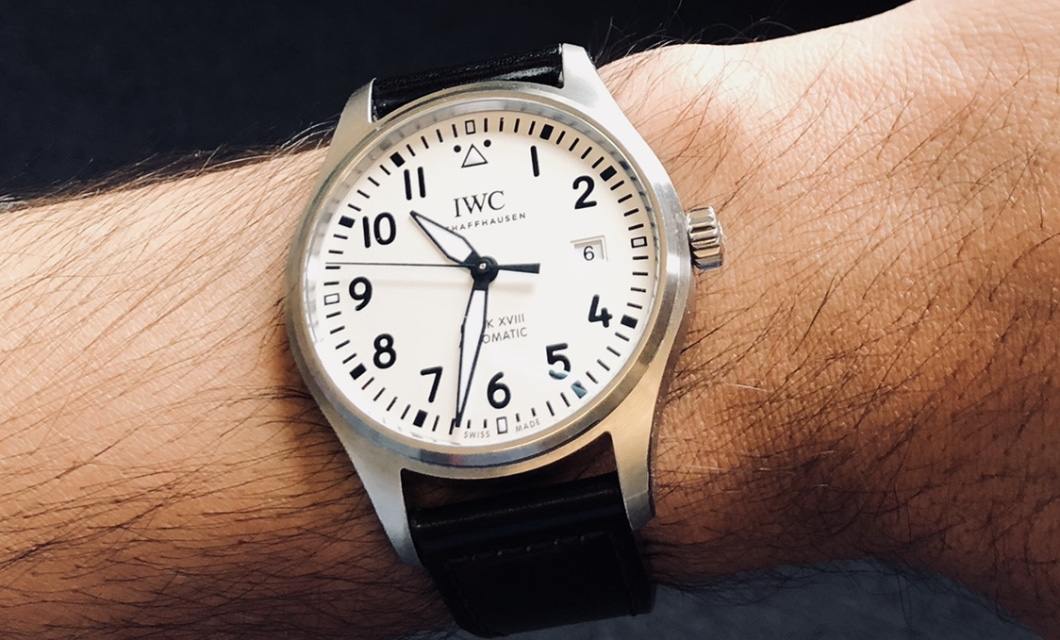
There was another Pilot’s Watch IWC called the Mark XVIII Top Gun Miramar with a 41 mm ceramic or titanium. 2016 saw the coming of seven references and the popularity of the Mark XVIII, in addition, led to the development of four additional models in 2017 and more in 2018. Some of these watches were introduced as limited editions which were availed only to active-duty graduates of the US Navy Fighter Weapons School. This watch was called the “Top Gun”.
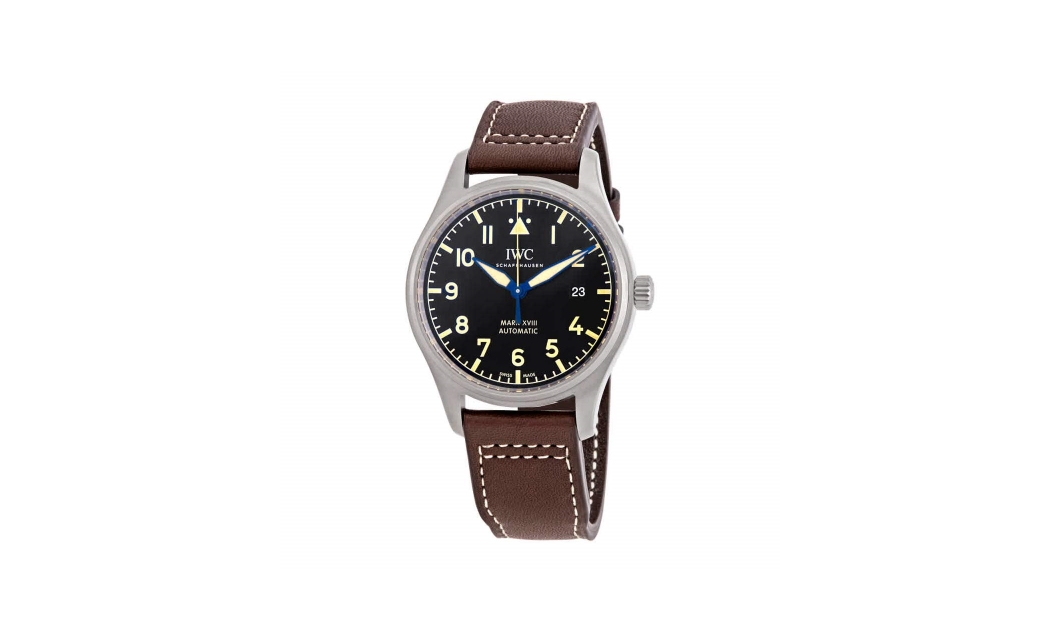
The case of the Mark XVIII is crafted with stainless steel with edges that are angled in a way that they become wider as they come closer to the lugs. The material surface of the watch is brushed to perfection. The navy blue limited edition displays the “Petit Prince” engraving, homage to Antoine de Saint Exupery’s famous fictional character of the famous homonymous novel.

The strap of the watch provides an easy wearing experience. Created by Santoni for IWC, it has an eye-catching orange lining. This part is concealed when the watch is worn, but the splash of colour adds extra character to the Mark XVIII. All-in-all, the watch and the strap blend in together as a trustworthy chronograph.
DISPLAY
The dial of the watch, made with soft iron, assures legibility under any circumstance, ranging from total darkness to under direct sunlight. It has a highly contrasting element and generous application of lume on the dial. It does not light up like a torch, like most watches do, but even after the charged Super Luminova wears off, one can clearly get a clear vision of the time. The simplicity and the utilitarian nature of the watch makes it versatile.
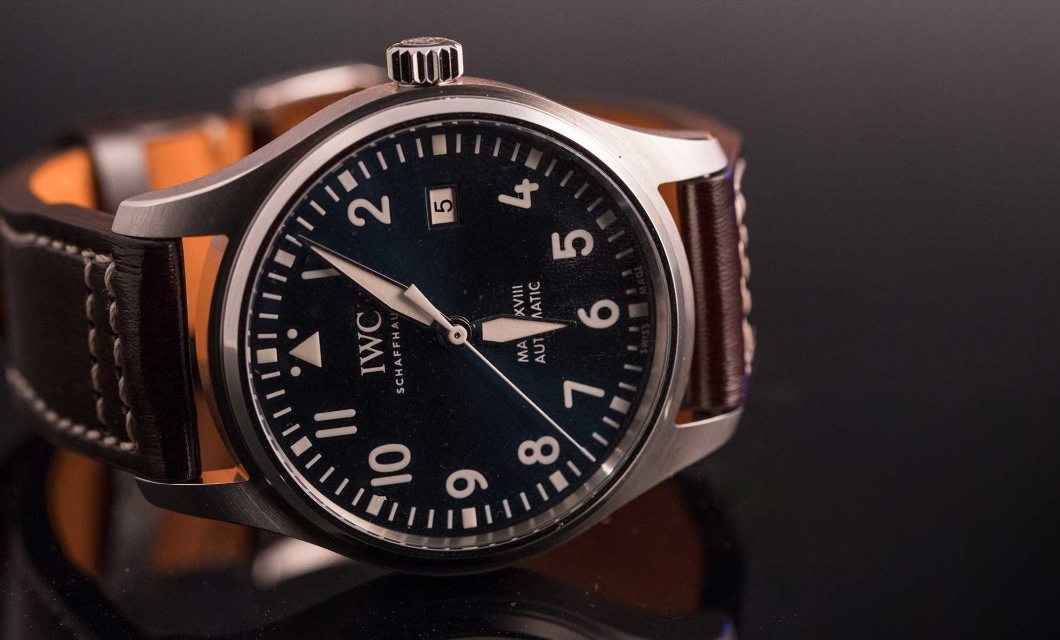
The idea of implementing a date window to a Mark watch was introduced with the Mark XII. What ticks off this idea is especially its placement on the dial.
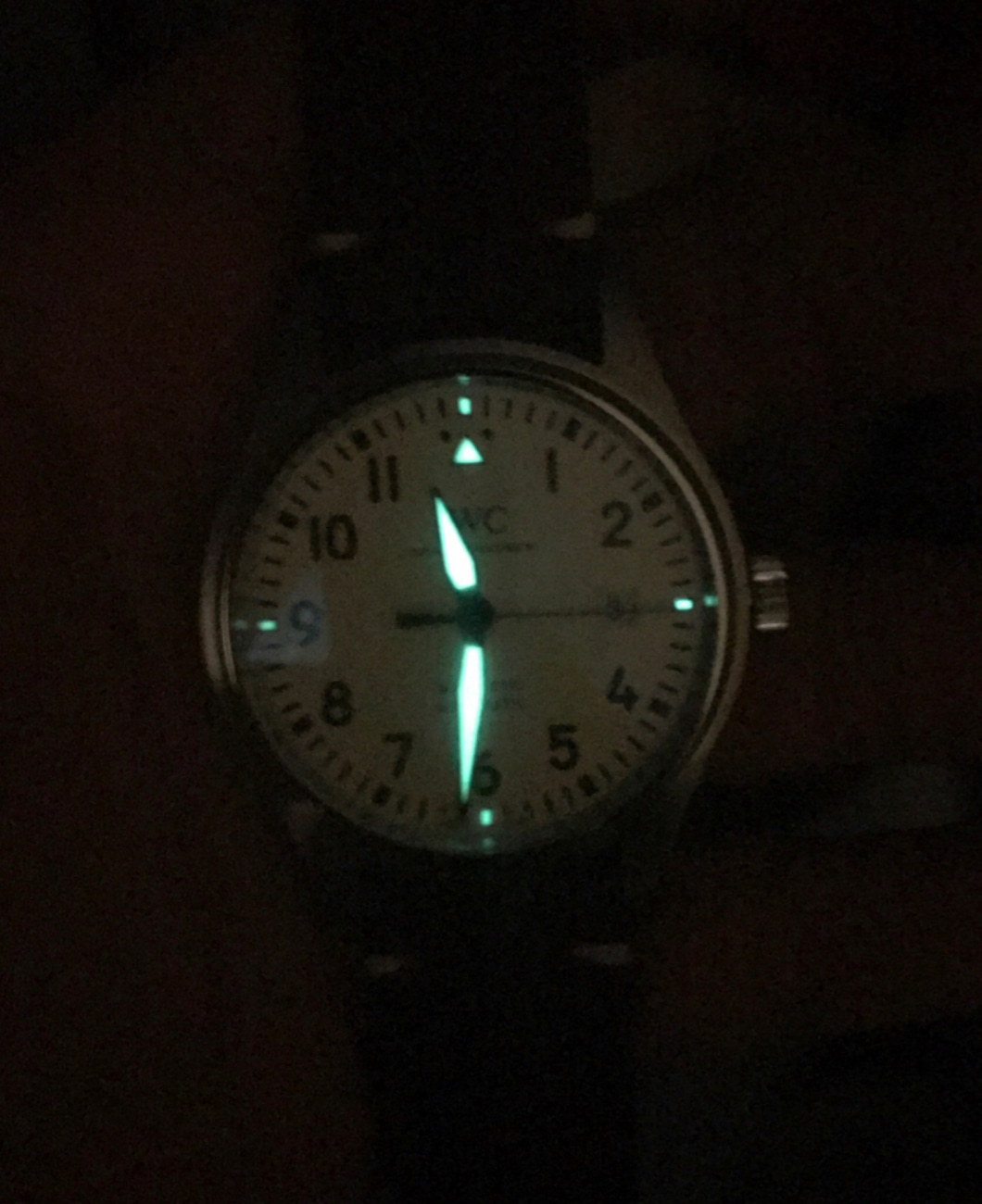

Mark XI, WatchCentre
INSIDE THE WATCH
The technical aspect of the Mark XVIII is intricately detailed. It implements the Calibre 30110, which is a modified automatic movement based on an ETA 2892, adjusted to temperature and a power reserve of 42 hours. The crown employs a screw-down mechanism which prevents water from seeping in. The watch bears a water resistance capacity of only 60 meters and not permissible to every type of water-based activity. Though this might fray away certain customers from taking an interest in this watch, the water resistance is higher than most pilot’s watches, the IWC Big Pilot or the Zenith Pilot Big Date, to name a few.
The watch has been fashioned in a way that gives out the impression of an everyday wear without claiming for extraordinary attention. It bears the image of a sports watch and this can be attributed to the idea of installing the date window. Without it, the watch can perfectly accessorise a formal look.
The year 2017 saw the rising popularity of two models in the Mark series of IWC- the titanium Pilot’s Watch Mark XVIII Heritage Watch and the 1948-piece limited edition Pilot’s Watch Mark XVIII Edition “Tribute to Mark XI”.
Overall, it can be said that the Mark XVIII is a watch crafted with simplicity, durability and accuracy. It is a useful tool and evokes a sense of what the military pilots of the 1940s and 50s wore. This is a reminder of IWC’s pilot’s watch legacy. This timepiece is a successor of every watch that had been previously made in the series. The watch has a masculine outlook. The size of the dial has been overtly emphasized by keeping the bezel thin, keeping the primary function of the watch intact. The textures have been perfectly selected and the contrast between the face of the watch and the markers is remarkable.


